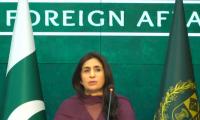In December of 1952, a period of cold weather in London, coupled with burning of coal for heat, no rain and windless conditions led to pollution accumulating in the environment and forming a blanket of smog smothering the city. Most of the pollutants came from the burning of coal, which was used to heat homes and power factories. The official mortality once the fog dissipated after 5 days was 4,000 at that time, however more recent reports rank the death toll at 12,000. Majority of deaths were caused by exacerbation of existing respiratory conditions especially among the elderly. The crisis resulted in great rethink of the dangers of air pollution.
Peering through the mists of time, everyone is well aware of the cataclysmic events that follow Mr Churchill’s young assistant being run down by the bus due to zero visibility on the roads. This was followed by the famous speech on air pollution by Winston Churchill which led to the environmental legislation like the City of London act of 1954 and Clean Air Act of 1956.
Lahore and its adjacent cities are no different. The thick smog is gradually encompassing the rest of the country. Due to no visibility on the roads, schools, colleges and offices have been closed. Airports are either shut down or airplanes are being redirected to land in other cities. Daily life is on a stand still. The number of fatal road side accidents and hospital admissions due to respiratory complaints and eye infections is on a rise. It is pertinent to understand here that this is not an “Act of God” but the causes are anthropogenic in nature. Lahore is now considered among the most polluted cities in Asia, hence air pollution is an issue that needs to be urgently addressed.
New estimates from the Global Burden of Disease project and the World Health Organization states that between 5.5-7 million people die from air pollution every year. That’s more than those that die from malaria and HIV/Aids put together. Air pollution is the fourth-highest risk factor for death globally and by far the leading environmental risk factor for disease. Air pollution contributes to heart disease, stroke, lung cancer, bronchitis, emphysema and acute infections.
6% of all global deaths occur due to prevalent air pollution with 7 million deaths occurring every year. Around 1.4 million deaths occur in China, followed by India with 645,000 deaths occurring annually, due to their dependence on coal as a fuel and their fast growing economies.
Following these two most polluted countries in the world is Pakistan, with 111,000 total deaths every year due to pollution. Pakistan ranks 3rd for most premature deaths due to air pollution. Karachi is rated as the fifth most polluted city in the world
According to a World Bank report on Pakistan, outdoor air pollution alone causes more than 80,000 hospital admissions per year; nearly 8,000 cases of chronic bronchitis, and almost five million cases of upper respiratory infections in children under the age of five. The fragile health system of Pakistan is ill-equipped in dealing with this additional burden of disease due to air pollution. The losses attributed to air pollution, in terms of health care costs, are around 500 million dollars a year.
Highly inefficient energy use, accelerated growth in vehicle population and vehicle kilometers traveled, increasing industrial activity without adequate air emission treatment or control, open burning of solid waste including plastic, and use of ozone depleting substances (ODSs) are some of the major causes of deterioration of ambient air quality.
The household sector is the largest single energy-consuming sector in Pakistan. Biomass fuel, wood, crop residue and dung account for 95% of energy consumed by households in rural areas, with the share dropping to 56% in urban areas. Biomass combustion is a major source of indoor air pollution.
For a developing country like Pakistan, urbanization has been one of the significant factors contributing to environmental degradation in general and air pollution in particular.
The beautiful city of Lahore is choking under a thick veil of soot, dust and carbon particles. The smog in Lahore has crossed the international benchmarks. The levels of PM 2.5, which is a hazardous particle in air most damaging to health has reached 450-500ug/m3, against the standard measure of 35ug/m3 per day. In any other developed city in the world, this would be declared an emergency and remedial actions and legislations would be announced by the government. However, the silence of the concerned authorities to implement remedial action plans to tackle this emergency does not bode well for the future of the country. Worldwide there are a growing network of cities committed to cleaning the air and protecting the health of their citizens from air pollution by becoming a part of the Breathelife city Network. For becoming a part of the beathelife cities network, local governments in the respective cities pledge to putting their city on the journey to meet the WHO air quality guidelines by 2030.
Air pollution is one of those complex environmental problems where control through point source reduction is considered most desirable, and the only way to prevent adverse health and other damaging impacts. Once emitted into the atmosphere, unlike other matrix/media, the recycling or re-use of the emitted products from the atmosphere is almost impossible. We have the relevant laws to divert such emergencies, however we lack the will and capacity to implement and enforce these laws.
It is encouraging to know that the Lahore High Court, on directives of the chief justice has sought to declare a public health emergency over the issue of smog. However, the reluctance of the provincial environment department to find remedial measures to tackle the situation is baffling. A reliable and robust air quality monitoring system, weather forecasting system are essential to chalk out policies in order to combat the public health hazards of smog. In addition, there’s a need for health system strengthening and data sharing between relevant authorities and ministries to gain wide dissemination of information to people for them to take preventive actions.
The writer is a freelance consultant on environmental health issues.
drmehr5@gmail.com
Saad was of the view that the battle of politics should be fought solely through political means
KP govt decided to develop gemstone business as a formal export sector and cluster at the Namak Mandi would be...
Khyber Pakhtunkhwa Minister for Higher Education, Archives, and Libraries, Meena Khan Afridi. — APP FilePESHAWAR:...
Vehicles and horse carts passing through flood water at Bara Bazar area on Khuwani bridge after heavy rain in Peshawar...
Amid the failure to revive the cash-bleeding PIA, government is left with no other option but to sell it to any...
Picture showing the Silver Jubilee Gate of the University of Karachi. — APP File KARACHI: The University of Karachi...







